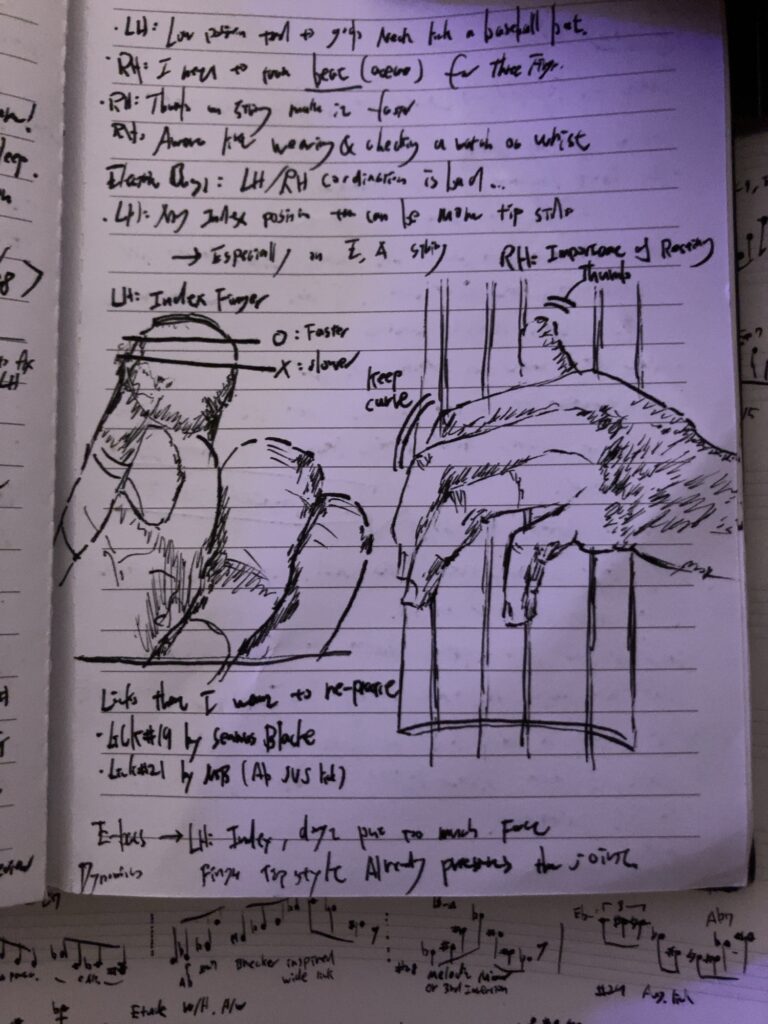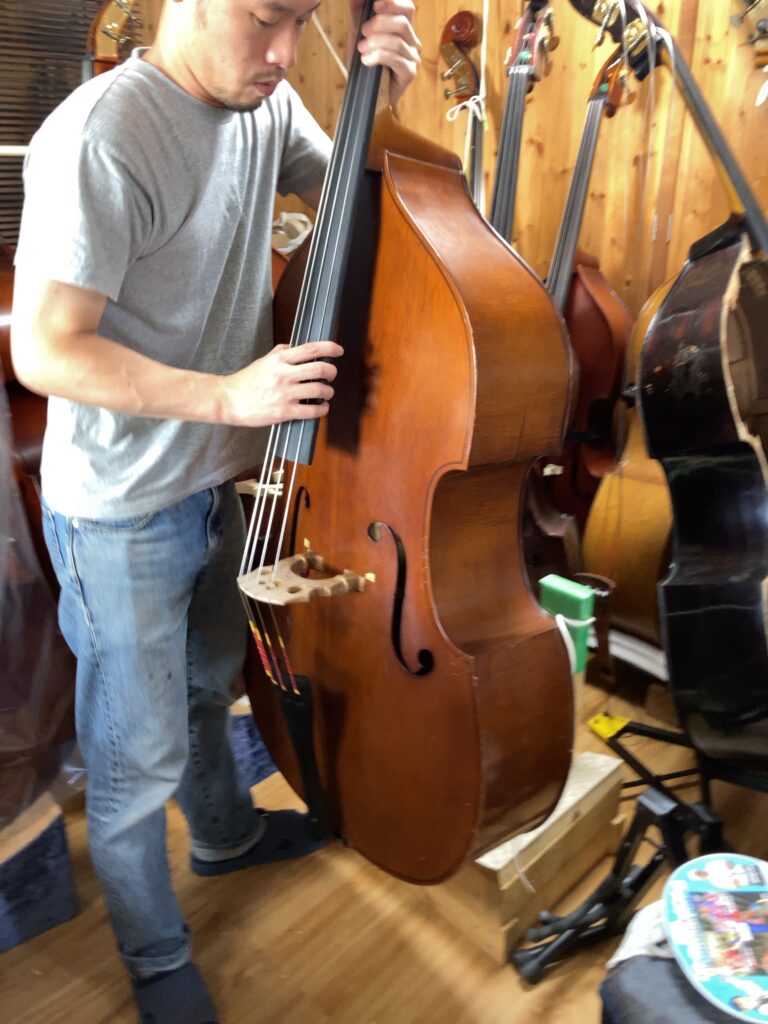-72-.
The temperature outside is getting hotter. I have to run the air conditioner and fan at the same time or else I’ll sweat on the double bass.
My goals for this month were 1) to play Michael Brecker’s Giant Steps solo in x1.0, 2) to score Michael Brecker’s Recorda Me, 3) to fix my right hand, and 4) to fix my left hand.
I didn’t accomplish any of the goals and will probably carry them over to next month. 1) I got to x.75 and noticed that I was playing the three fingers in the right hand out of order. I was a little shocked to realize it now. I started practicing three fingers in January this year, and since February I have not been very conscious of the order of the fingers in my right hand (Ring -> Middle -> Index). This was because I had been practicing my right hand and left hand separately, and I had not practiced left-right coordination. I focused on exercises like mechanically moving back and forth between arpeggio and scale to work on the string crossing. Sometimes, some licks still the fingers are out of order when crossing strings.
To correct the right hand, I practiced slowly for the MB solo on Giant Steps. I needed to pay attention to what each finger starts and ends with, and since I didn’t pay this much attention to 2 fingers, the road to mastering 3 fingers seemed long. I don’t seem to see the end of the road to mastery, however, 3 fingers are becoming more natural to me than 2 fingers because my brain feels buggy when I play with 2.
From practicing the same song over and over again and chasing speed, I found a way to do it faster with my right hand. If I play with my fingers slightly bent in a relaxed position, as if I were checking my watch, I can pluck strings faster.
While pursuing speed, I also found that I could press the strings with my left index finger a few millimeters toward the fingertip, which allowed me to relax my arm more. However, this is not easy to do, and when a phrase requires an extending pivot move, I find myself pressing the strings with the side of my fingers instead of the tip, and then I find myself back where I started. Even as I write, I’m wondering if I should keep my left hand the same or modify it. Or I need to find a way to use both sides and fingertips, versatile like a thumb, where I can press strings anywhere near the joint.

The last week of July, I spent having my instrument fixed by Bassland, a double bass store in Tokyo, so I was sorting out the relationship between melodic minor and lydian dominant on electric bass for the first time in a while.
As for the circumstances that led to the repair, the strings that came with the veneer double bass I bought for 40,000 yen(approx. $270) on the free market website were high tension and the string height seemed too high. I asked him to reduce the string height from G string to 2,3,4,5mm and he gladly accepted. The low-string height setup was considerably influenced by Yuri Goloubev.
As a result, the repair cost was about 60,000 yen(approx. $400) for re-shaving the fingerboard, re-painting the fingerboard (because it is not ebony), installing brass adjusters, replacing strings (D’Addario Helicore Pizzicato light gauge), and thinning and adjusting the neck, which cost more than the double bass itself. I could have saved up a little more money and bought a silent bass(YAMAHA), but I was also curious to see how much change there would be in string height and string replacement.

I had the string height set at 4.5mm, 5.1mm, 7.1mm, and 6mm starting from the G string before the repair, and he had it set at 2, 3, 4, and 5mm. However, considering the buzzing noise from the fingerboard, at least the G and D strings had to be raised, and the E string is now higher than before at 3.7mm, 5mm, 6.4mm, and 7.5mm, but it is still easy to play due to the loose tension of the light gauge.
I cannot identify the previous strings because I don’t know their names, but when I tried to play the three fingers vertically parallel to the strings as if they were two fingers, I could not pluck the string well due to the high tension. The helicore light gauge makes it easier to play pizzicato. The playability varies so much depending on the strings that it is almost as if it were a completely different instrument. Low-tension strings contribute more to faster and easier playing than low-height strings.
Acoustically, the treble and brightness are more noticeable than the previous strings. Also, if I put an ultra bridge mute on a double bass, the acoustic sound will be much quieter and feel insufficient. Maybe that is a trade-off for playability. Also, I don’t know if the previous strings were pretty dead or if this string is the same, but the E and A strings sound brighter than expected. Maybe it will break out after a few months, we’ll see. For now, I’m happy with my current setup.
——
Despite a lot of mechanical practice, it was generally a good month because I was able to get a lot of practice time in. It was also fun to start living on my own and create an environment to shoot at home. I was also able to go to a local jazz club: Narita Cloud 9 once to listen to a live jazz concert. The quartet was playing several original CD songs and one standard at the end. The player was about my age but played well.